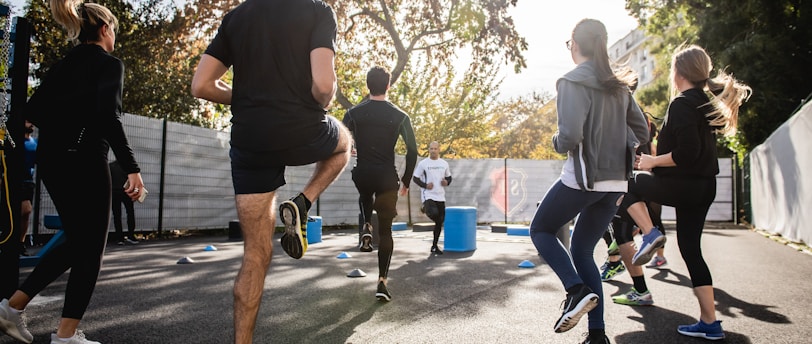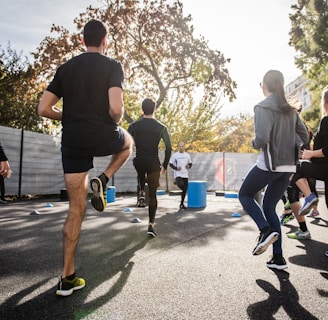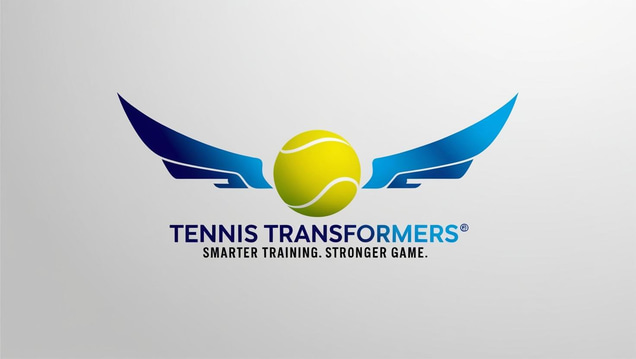Mastering Tennis Footwork for Success
Discover the importance of footwork in tennis and how it can elevate your game. Learn effective strategies to improve your tennis footwork and enhance your performance on the court.
EXERCISE & FITNESSTENNIS TALK
3/19/20254 min read


The Critical Importance of Good Footwork in Tennis
Tennis is often described as a game of inches, where the smallest details can make the biggest difference. While powerful strokes, pinpoint accuracy, and strategic thinking are all crucial elements of success, one of the most underrated aspects of tennis is footwork. Good footwork can be the difference between reaching a ball in time to hit an aggressive shot and being forced into a weak defensive position. In this blog, we’ll explore why footwork is so essential, how it impacts different aspects of the game, and ways to improve it.
Why Footwork Matters in Tennis
1. Positioning for Better Shot Execution
Tennis is a sport of quick reactions, and without proper footwork, even the best shot technique can fall apart. Good footwork allows players to position themselves correctly before striking the ball, ensuring better balance, control, and power. When a player moves efficiently to the ball, they can generate more force and precision, making their shots more effective.
2. Improved Court Coverage
A tennis court may not seem large compared to fields in other sports, but the rapid pace of play requires constant movement. Effective footwork ensures that a player can cover the court quickly and efficiently, allowing them to retrieve difficult shots, chase down drop shots, and return powerful serves. Players with excellent footwork appear to glide across the court effortlessly, always seeming to be in the right place at the right time.
3. Defensive and Offensive Play
Footwork is just as important on defense as it is on offense. A player with strong footwork can recover quickly from one shot to prepare for the next, preventing their opponent from gaining the upper hand. Good movement allows for quick lateral transitions, sudden changes in direction, and seamless shifting between offensive and defensive stances.
4. Balance and Stability
Balance is fundamental in tennis. Proper footwork helps players maintain their center of gravity, reducing the risk of slipping or falling while executing shots. Balanced movement leads to cleaner strokes and minimizes unforced errors. It also prevents fatigue since poor footwork can lead to unnecessary, energy-draining movements.
5. Adaptability to Different Playing Surfaces
Different court surfaces require different movement techniques. On clay courts, sliding into shots is common, while on grass, quick adjustments are needed due to the low bounce. Hard courts demand strong shock absorption to prevent injuries. Players with refined footwork can seamlessly adapt to these variations, optimizing their game no matter where they play.
Key Footwork Techniques in Tennis
1. Split Step
One of the most fundamental footwork techniques in tennis is the split step. This is a small hop taken just before the opponent makes contact with the ball, helping players stay light on their feet and react quickly in any direction. The split step is crucial for quick adjustments and getting into the right position for the next shot.
2. Side Shuffling
Lateral movement is critical in tennis, as players often move side to side more than they move forward or backward. The side shuffle keeps players balanced and ready to adjust to an opponent’s shots without crossing their feet, which can lead to instability and slower reactions.
3. Crossover Steps
When covering large distances, a crossover step is more efficient than a simple shuffle. This technique allows players to cover more ground quickly by crossing one foot over the other before recovering to a neutral stance.
4. Recovery Steps
After hitting a shot, recovering quickly to a ready position is essential. Good players use a combination of side shuffles and crossover steps to return to a central position, keeping them prepared for the next exchange.
5. Forward and Backward Movement
Approaching the net for volleys requires quick forward steps, while retreating for deep shots requires strong backward movement. Effective footwork allows for smooth transitions between these movements, ensuring players can reach the ball in an optimal position.
How to Improve Footwork in Tennis
1. Agility Drills
Agility drills, such as ladder drills, cone drills, and resistance band exercises, help improve quickness and coordination. These exercises enhance a player’s ability to move rapidly while maintaining control.
2. Strength and Conditioning
Leg strength is crucial for explosive movement. Squats, lunges, and plyometric exercises can build lower-body power, improving speed and endurance on the court.
3. Shadow Drills
Practicing footwork without hitting a ball—also known as shadow drilling—helps ingrain movement patterns. Players can simulate rally situations, focusing on split steps, lateral movement, and recovery.
4. Balance Training
Balance exercises, such as single-leg stands, stability ball workouts, and core strengthening exercises, help players maintain stability and prevent injury.
5. Using the Topspin Pro for Footwork Training
The Topspin Pro is a valuable tool for improving footwork while reinforcing proper shot technique. This device allows players to practice topspin mechanics with a stationary ball, helping them focus on movement and positioning without the pressure of a live rally. Here’s how it can enhance footwork:
Encourages Early Preparation: Since the ball remains in a fixed position, players can concentrate on setting up correctly, practicing their foot placement before executing each shot.
Develops Muscle Memory: By repeatedly moving into position and striking the ball with proper form, players can develop the habit of using efficient footwork patterns in real matches.
Simulates Match Situations: Players can incorporate movement drills by starting from different positions on the court and stepping into the correct stance before hitting the ball, mimicking actual point play.
Reinforces Recovery Steps: After striking the ball on the Topspin Pro, players can practice their recovery steps, returning to a neutral stance to simulate real-game transitions.
Using the Topspin Pro in conjunction with dynamic footwork drills allows players to build both technical and movement skills simultaneously, leading to more effective shot execution on the court. For more information on the Topspin Pro click below
Conclusion
Tennis is a dynamic sport that requires precision, agility, and strategic movement. Good footwork is a foundational skill that influences every aspect of the game, from shot execution and court coverage to defensive play and injury prevention. By focusing on footwork training and incorporating key movement techniques, players can elevate their game and gain a significant competitive edge. Whether you’re a beginner looking to improve or an advanced player refining your skills, mastering footwork—along with tools like the Topspin Pro—is an investment that will pay off in every match you play.
©2025 Tennis Transformers. All rights reserved
Disclosure
This website contains affiliate links. If you purchase through these links I may earn a small commission at no extra cost to you. I only recommend products I believe add value to you. This helps support my work and allows me to continue providing valuable content. Thank you for your support!
